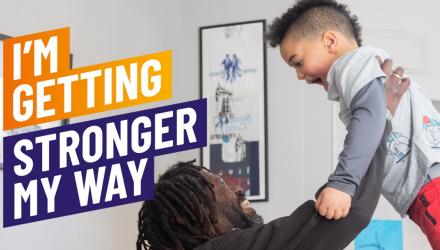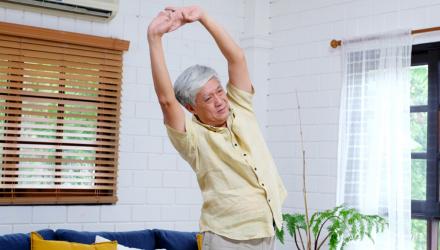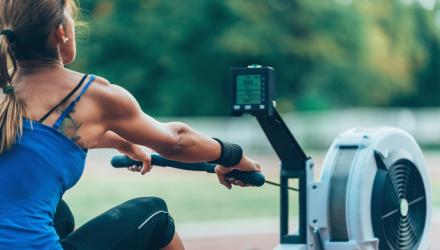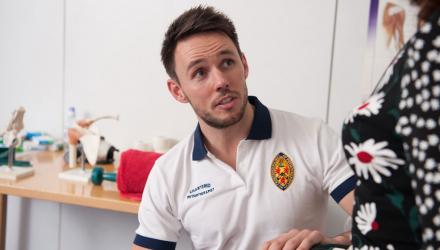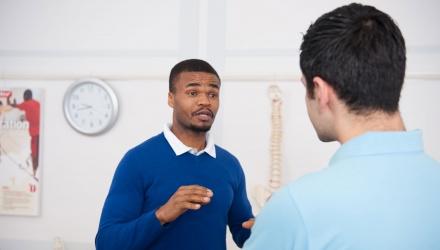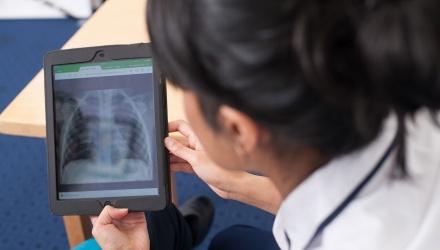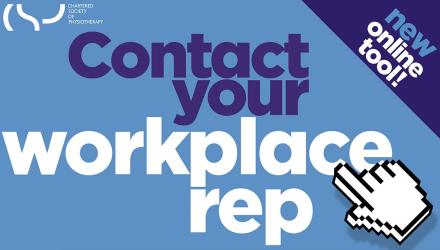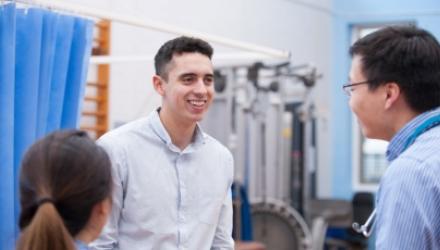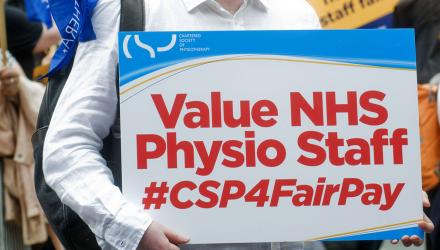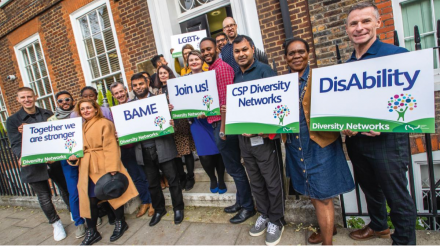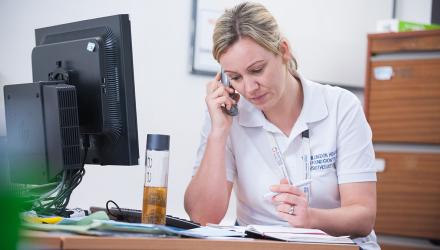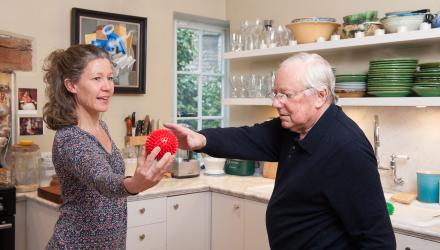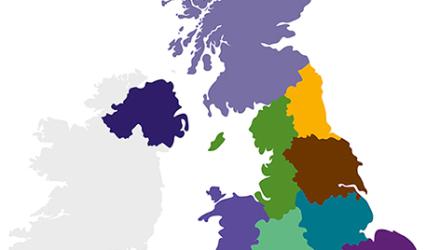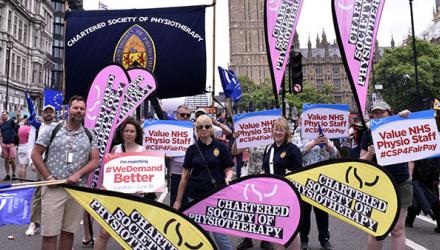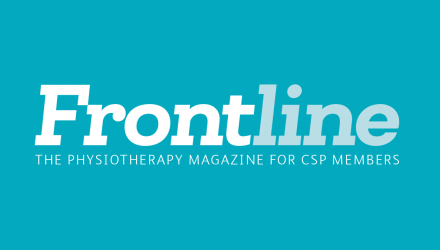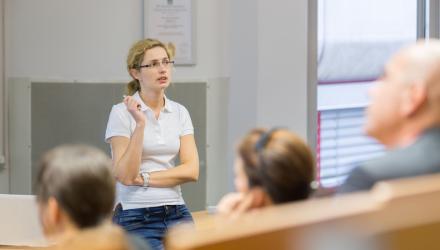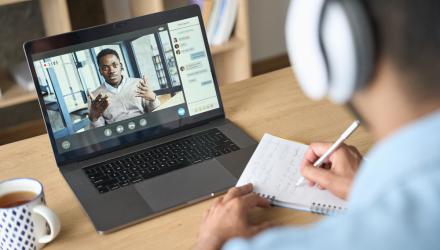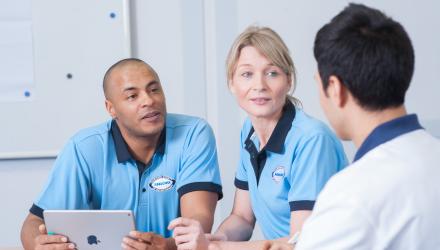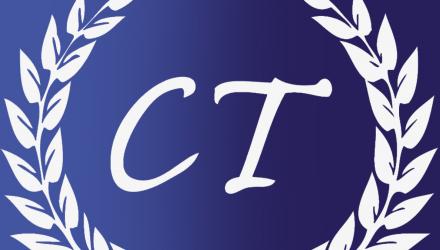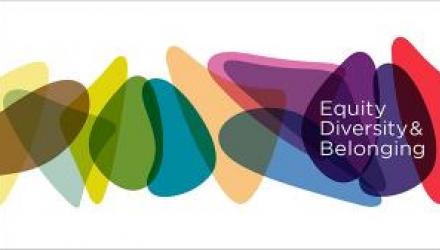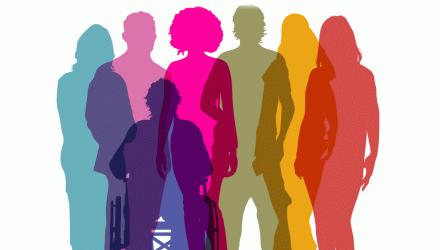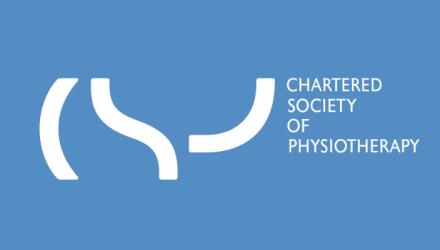The DisAbility network supports and empowers disabled* CSP members to reach their potential and is a lead contributor to physiotherapy's equality and diversity agenda.
The DisAbility network is one of three diversity networks, and is open to all CSP members who identify as part of the group, including students and associates.
Membership is on the basis of self-identification and is confidential. Access to details is restricted to those CSP officers who work directly with them.
Our aims
- Enabling disabled members to thrive – normalising disability and promoting disability pride within the profession and educational settings.
- Increase levels of CSP member engagement with the DisAbility network.
What we do
Learn from each other
The network allows us to share ideas, and build our understanding of challenges and opportunities we face in a safe supportive environment. It is a springboard to spread our individual and collective learning among the membership and in our workplaces, physiotherapy and the wider world.
Share and support
We share our problems and successes. A key activity for the networks is peer support: members volunteer to be put in touch with others who are experiencing difficulties in the workplace. And when we progress issues, we find sensitive ways to get the message out.
Organise and influence
Together we identify and plan activity that seeks to address discriminatory behaviours, processes and structures to promote equality and diversity at work and in society. That includes influencing change locally and nationally, in the CSP, the profession, the wider health system and government legislation too, working with partners, wherever necessary and possible. We achieve this, in part, by submitting motions and sending representatives to the CSP Annual Representative Conference (ARC) and to TUC equality conferences.
Current vacancies:
- Co-chair
- Vice-chair
- Communications officer
- Associate officer
Committee roles
Roles are open to all CSP members (including students and associates) who self-identify as part of the network group. All you need to do is join the DisAbility network first and contact the network to express interest and/or to find out more.
Job share is available for each role and length of term is flexible.
For details of how the committee is chosen, and to find a copy of our constitution, visit the How we operate page.
Network chair/co-chairs
Term: two years (open to discussion)
Responsibilities:
- Lead on vision for the network
- Liaise with key CSP stakeholders including but not limited to: CSP Council, EDB committee and the diversity engagement officer
- Manage the network inbox
- Lead the network’s delegation to ARC, the CSP annual conference, and TUC conference
- Raise concerns of the network with CSP council
- Liaison with other diversity network chairs
- Chair the network’s meetings and events
Current co-chairs: Greet Janssens (and vacant position)
Greet Janssens
I graduated in Belgium with a BSC Physiotherapy in 1998. I then worked in private practice for 10 years, sharpening my interest and skills in respiratory physiotherapy with children and adults, alongside neuro development. Following my move to the UK in 2008, I followed my passion in children’s physiotherapy.
In November 2019, I had a stroke in the medulla oblongata, affecting my mobility and causing chronic pain in the left side of my body. After returning to children’s physiotherapy, I realised how important it is to empathise with patients and families, particularly where neurological events changed their lives at birth or throughout their young lives.
My hearing impairment, along with the newer disability, means that I can contribute to the quality of newly qualified physiotherapists with a different ability and to those aspiring to become a physiotherapist. Becoming a convenor with the CSP DisAbility network is helping me to make a difference to the educational, access and application experience, seeking a balance with prospective employers towards reasonable adjustments.
Vice-chair
Term: two years
Responsibilities:
- Support the co-chairs with tasks as capacity and diary allows.
Current vice-chair: Vacant
Secretary
Term: two years (open to discussion)
Responsibilities:
Support the committee with tasks as capacity and diary allows
Administrative support including but not limited to:
- Scheduling meetings
- Record-keeping
- Distributing information
- Meeting preparation
- File organisation
Current Secretary: Lauren Dovey
Communications officer (x2)
Term: two years (open to discussion)
Responsibilities:
Increase network profile, visibility and membership and support improved understanding of disability across the profession through network communications across various channels, including but not limited to:
- iCSP
- Social media (X and Facebook)
- Frontline
Support the committee with tasks as capacity and diary allows
Current communications officers: Rhiannon Kendrick (and vacant position)
Events and education officer (x2)
Term: two years
Responsibilities:
- Coordinate and plan network events throughout the year around the EDB calendar
- Support improved understanding of disability across the profession through events and resources
- Support the committee with tasks as capacity and diary allows
Current events and education officer: Marie-Claire (M-C) Wadley and Sally Kiernan
Student officers (x 2)
Term: two years (open to discussion)
Responsibilities:
- Speak from a student perspective so that the network’s annual actions incorporate the student voice
- Engage students in network activity
- Support the committee with tasks as capacity and diary allows
Current student officers: Sofia Stephenson-Bell and Kate Reynolds
Associate officer
Term: two years
Responsibilities:
- Speak from an associate perspective so that the network’s annual actions incorporate the associate voice
- Engage associates in network activity
- Support the committee with tasks as capacity and diary allows
Current associate officer: Vacant
Committee ambassador (x 2)
Term: two years (open to discussion)
Responsibilities:
- Support the committee with tasks necessary for the functioning of the network.
Current committee ambassadors: Graeme Watson and Jasmine Churms
*Language – how the CSP writes about disability
The CSP acknowledges the social model of disability, which says that people are disabled by the attitudes of other people and by the barriers society puts in their way. We reflect this in how we write about disability and the language we use.
In line with the social model, unless referring to an individual who has informed us they identify under a different term, we use identity-first language such as ‘disabled person/people’ and 'a person with an impairment/people with impairments' within our communications.
